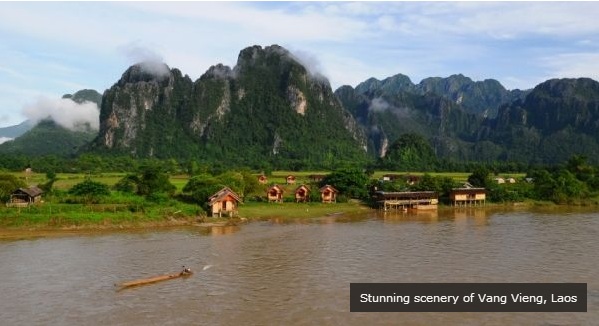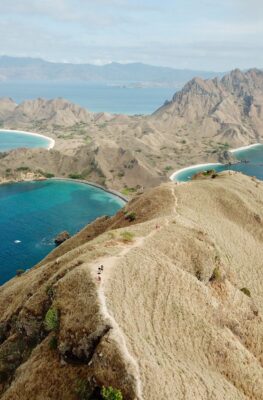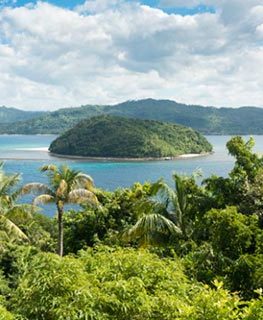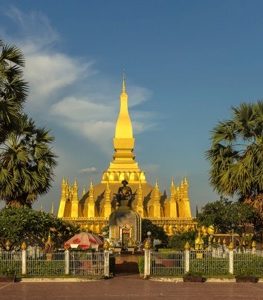Published on February 15, 2010

When it comes to popular backpacker japes, “tubing” – floating peacefully downriver on a giant inflatable inner-tube – is up there with debauched “full moon parties” or trekking upon elephant back to “hill-tribe” villages in the Golden Triangle.
Indeed, Lonely Planet describes this well-established tourist lark as “one of the rites of passage of the Indochina backpacking circuit”. As such, being set adrift in a rubber ring is a buoyant escapade offered in numerous locations across the region. However, many travelers set course for the Nam Song River in Vang Vieng – a tiny town in northern Laos bordered by awesome mist-shrouded mountain scenery soaring from the flat rice plains – to get their aquatic kicks.
Tubing seems to be the raison d’être of the place, which is a 4-5 hour minibus ride from the Laos capital of Vientiane. While adventurers can also go hiking, caving, kayaking, or even play mud volleyball, spend any time in Vang Vieng and you soon realize that the bubbling tourist infrastructure is mainly there to support tubers.
This is assuredly not a place to sample Lao culture, but it’s a relaxed, party-friendly scene, comprising a motley crew of guesthouses (blaring never-ending episodes of Friends, The Simpsons and Family Guy in their communal areas) lining the main strip, plus internet shops, ramshackle late-night joints, after-dark sandwich and pancake stalls, and a couple of overused government ATMs.
The cost of hiring an inflatable drifter (anything from 35,000 kip to $6 with a refundable deposit) includes a tuk-tuk ride to the launch area, sited by an organic farm and fringed by abundant riverside bars, zip-lines, rope swings, Pétanque, a bonfire, and blaring sound-systems. It starts getting lively here from midday until just before dark, when tubers return to dry land and scramble to avoid the cheeky 20,000-kip late-return charge imposed after 6pm.
Unsurprisingly, the 4km tubular trips are (more often than not) pursued with a beer in one hand and a tipsy grin splattered across your face. However, before you plunge headlong into a vulcanized rubber ring, consider that, although floating away on a tropical stream might sound like the aquatic equivalent of a placid walk in the park, tubing Vang Vieng is sometimes not for the fainthearted. There are thrills and repeated spills up for grabs, for sure. However, while the river generally flows slowly-but-steadily, during monsoon season (May-Nov) it can swell and currents may surge.
I recall one of my travel companions carefully washing off the dust from her inner tube before daintily boarding the bobbing vessel, as if attempting to broach a precarious stepping-stone. She need not have bothered. By journey’s end – signified by the cluster of helpful locals dangling bamboo poles over the river for us to clutch at – we had all been dunked repeatedly in the river and were consequently drenched.
Tubes, I discovered, can’t really be steered. One moment you can be drifting serenely among your mates. Then, almost before you know it, you’ve been separated from the pack (usually rejoining them at some later juncture; perhaps one of the floating bamboo bars that pock the route). At one point, I drifted beneath, and got caught up, in some dangling branches overhanging the riverbank – only to emerge covered in large spiders.
I later managed to lose my T-shirt somewhere midstream. I neglected to replace it with a local one bearing the legend “Tubing In The Vang Vieng Laos” – although perhaps I should have. After all, sacrificing an entire town to tourism could prove economically beneficial, in the long haul. Traditional Laos may know little of tubing, but Vang Vieng has become a real ringer for drifters and floating travelers.
No stranger to creating or updating travel guides, British writer Joel Quenby has been exploring and writing about Southeast Asia for almost a decade.






